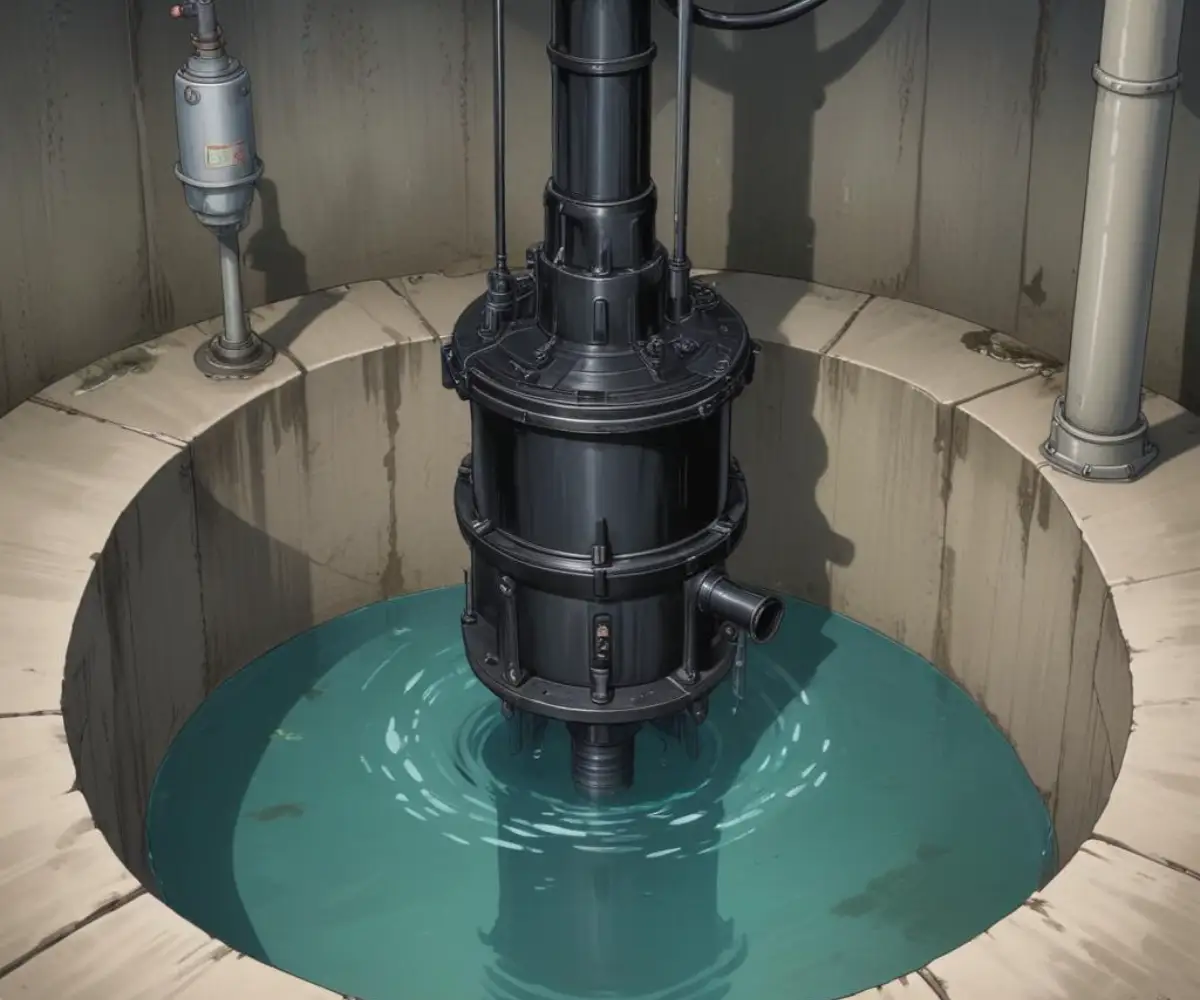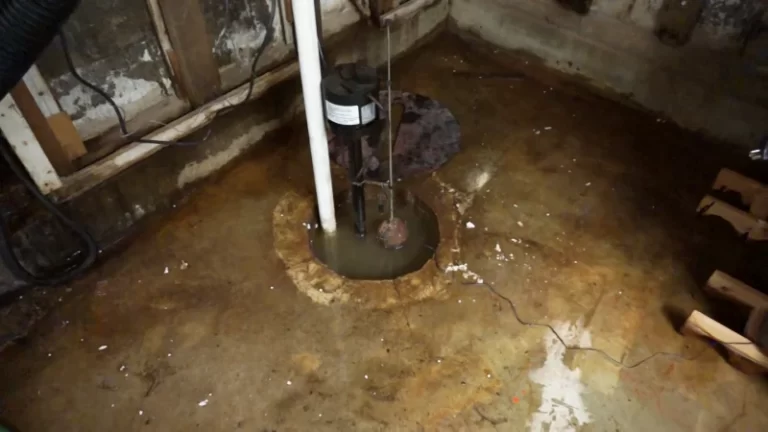Sump Pump Runs Every 10 Seconds? Here’s the Alarming Reason Why
That rapid, machine-gun-like cycling of your sump pump—on for ten seconds, off, then on again—is more than just an annoying sound. It’s a critical warning sign that your basement’s first line of defense against flooding is under extreme stress. This condition, known as short cycling, can lead to premature motor burnout, leaving your home completely vulnerable to water damage when you least expect it.
Ignoring a sump pump that runs every 10 seconds is a costly mistake. The constant starting and stopping places immense strain on the motor and electrical components, drastically shortening its lifespan. Before a minor issue turns into a basement flood, it’s crucial to understand what’s causing this frantic behavior and how to fix it.
You'll Learn About
Why Is My Sump Pump Short Cycling? The Core Problem
A sump pump is designed to run for a solid period, pump out a significant volume of water from the sump pit, and then rest. This efficient cycle protects the motor from overheating. Short cycling is the exact opposite of this; the pump activates for just a few seconds, ejects a tiny amount of water, and shuts off, only to repeat the process moments later.
This rapid-fire activation is a clear signal that something is wrong with the system. The pump is being triggered too frequently by a small amount of water. Pinpointing the cause requires a systematic check of the sump pump’s key components and its surrounding environment.
The Telltale Signs of a Failing Sump Pump Check Valve
One of the most common culprits behind a sump pump running every 10 seconds is a faulty or missing check valve. This simple, one-way valve is installed on the discharge pipe to prevent water that has just been pumped out from flowing back into the sump pit.
When the check valve fails, a column of water from the vertical discharge pipe rushes back into the pit the moment the pump shuts off. This returning water is often just enough to raise the float switch and trick the pump into turning on again. You’re essentially pumping the same water out over and over, which is a recipe for disaster. You might also hear a distinct “thud” or banging noise when the pump stops, which is a sign of water hammer caused by a failing valve.
Float Switch Problems: The Trigger-Happy Culprit
The float switch is the brain of the operation, telling the pump when to turn on and off. If this switch is improperly set or malfunctioning, it can cause severe short cycling. There are several ways a float switch can cause this issue.
A misadjusted float switch is a frequent problem. The “on” and “off” positions of the float may be set too close together. This means even a small amount of water entering the pit can trigger the pump, leading to short, ineffective cycles. The float switch can also become obstructed, tangled in the pump’s power cord, or pinned against the side of the basin, forcing it to activate prematurely.
Diagnosing the Cause: A Step-by-Step Troubleshooting Guide
Before calling a professional, you can perform a few diagnostic checks to narrow down the problem. Always disconnect the sump pump from its power source before performing any inspection or maintenance. Safety is paramount when working with water and electricity.
First, observe the sump pit as the pump cycles. Can you see water rushing back into the pit from the discharge pipe after the pump stops? If so, a bad check valve is almost certainly your issue. If you don’t see backflow, the problem likely lies with the float switch or the pit size.
Step 1: Inspect and Test the Check Valve
Locate the check valve on the PVC discharge pipe, usually a few feet above the sump pit. It will have arrows indicating the direction of water flow. Ensure it’s installed correctly, with the arrows pointing away from the pump.
Listen closely when the pump shuts off. A loud gurgling or rushing sound of water returning to the pit confirms backflow. Sometimes the valve is just stuck open due to debris; other times, the internal seal has failed, and the valve needs replacement. Replacing a check valve is a straightforward plumbing task for a handy homeowner.
Step 2: Examine and Adjust the Float Switch
Carefully inspect the float switch. Ensure it can move freely up and down without hitting the pump, basin walls, or any wiring. There are different types of float switches (vertical, tethered, electronic), and the adjustment method varies.
For tethered floats, you can adjust the pumping range by shortening or lengthening the cord. A shorter tether results in a shorter cycle. For vertical floats, you can typically slide the float stops on the rod to increase the distance between the “on” and “off” points. Widening this range allows more water to collect before the pump activates, leading to longer, more efficient cycles.

Step 3: Evaluate Your Sump Pit and Pump Size
Sometimes, the problem isn’t a faulty part but an improper installation. A sump pit that is too small for the amount of incoming water will fill up rapidly, causing frequent cycling. Standard residential sump pits should be at least 18 inches in diameter and 24 to 30 inches deep.
Similarly, a grossly oversized pump can be just as problematic. A powerful pump can evacuate the water from a small pit in just a few seconds, leading to short cycling. The pump’s capacity should be matched to the size of the basin and the average water inflow. If your system seems mismatched, it might be time for a professional evaluation.
Comprehensive Solutions for a Short Cycling Sump Pump
Once you’ve diagnosed the likely cause, it’s time to implement a solution. Acting quickly will save your pump’s motor and ensure your basement remains dry. For some issues, you may want to consult a professional plumber.
If you’re dealing with a constantly running pump, you may also want to investigate why you hear water running in your sump pump, as this can indicate related issues. These fixes are essential for maintaining a healthy and dry home environment.
When and How to Replace a Check Valve
Replacing a check valve is a common repair. You’ll need a new check valve (ensure it matches your pipe diameter, typically 1.5 inches), PVC primer and cement, and a pipe cutter or hacksaw. After shutting off the power and relieving any water pressure, you can cut out the old valve and install the new one using the appropriate couplings and cement.
Ensure the new valve is installed in the correct orientation. A properly functioning check valve is silent and effective, immediately stopping backflow and allowing your pump to rest between cycles. This single fix often resolves the most aggressive cases of short cycling.
Fine-Tuning Your Float Switch for Optimal Performance
Adjusting the float switch is about finding the sweet spot. You want the pump to turn on when the water is just below the inlet drain tile but turn off before the level drops below the pump’s intake, which can cause it to run dry. Experiment with small adjustments and then test the cycle by pouring buckets of water into the pit.
If the float switch itself is faulty or unresponsive, it will need to be replaced. This is often more cost-effective than replacing the entire pump. A new switch can restore your pump’s reliability and stop the damaging short cycles.
Preventative Maintenance: Your Best Defense
The best way to avoid a sump pump running every 10 seconds is through regular, proactive maintenance. An annual check-up can catch small problems before they escalate. This includes cleaning debris from the sump pit, testing the pump and float switch operation, and inspecting the check valve and discharge line for blockages.
Keeping your home’s mechanical systems in top shape is crucial for efficiency and safety. For instance, just as a faulty sump pump wastes electricity, an outdated furnace can be a major energy drain, making tasks like oil furnace removal a smart investment in your home’s future. Similarly, upgrading your cooling system can yield significant savings, which is why many homeowners consider whether to replace central AC with a mini split.
Quick-Reference Troubleshooting Table
Use this table to quickly diagnose and find potential solutions for your sump pump’s short cycling issue. This can help you decide whether it’s a DIY fix or time to call a professional.
| Symptom | Likely Cause | DIY Solution | When to Call a Pro |
|---|---|---|---|
| Pump cycles every 10-30 seconds; water rushes back into pit. | Faulty or missing check valve. | Inspect for correct installation. Replace the check valve if it’s worn or stuck open. | If you are not comfortable cutting and cementing PVC pipe. |
| Pump runs for very short bursts; little water enters the pit between cycles. | Float switch is misadjusted or tangled. | Untangle the float cord. Adjust the float’s tether or stops to increase the pumping range. | If the float switch is broken or unresponsive to adjustments. |
| Pump cycles frequently, especially during heavy rain. | Sump pit is too small or pump is too large. | Monitor the situation. No immediate DIY fix for sizing issues. | To get a professional assessment of your system’s sizing and potentially install a larger basin. |
| Pump runs frequently and discharge line outside seems slow. | Clogged or frozen discharge line. | Check the exterior termination point for blockages (ice, debris). Thaw a frozen line carefully with warm water. | If the clog is underground or you cannot safely clear it. |
The Financial and Safety Costs of Ignoring the Problem
Allowing a sump pump to short cycle is like running a car’s starter motor over and over—it’s not designed for that kind of stress. The immediate consequence is a higher electricity bill. The long-term cost is much greater: premature pump failure.
When the pump finally burns out, it will likely happen during a heavy storm when you need it most. The cost of professional water damage restoration can run into thousands of dollars, not to mention the loss of personal property and the risk of mold growth. Addressing the short cycling issue promptly is a small investment that protects the significant value of your home.
Your Action Plan for a Healthy Sump Pump
A sump pump that runs every 10 seconds is an urgent call for attention. Start by safely diagnosing the issue, focusing on the check valve and float switch as the primary suspects. Many of these fixes are within the grasp of a confident DIYer.
However, if the problem persists or involves incorrect pump or pit sizing, don’t hesitate to contact a licensed plumber. The peace of mind that comes from knowing your basement is protected by a reliable, efficient sump pump system is invaluable. Don’t wait for the water to rise—take action today.

